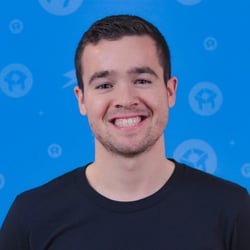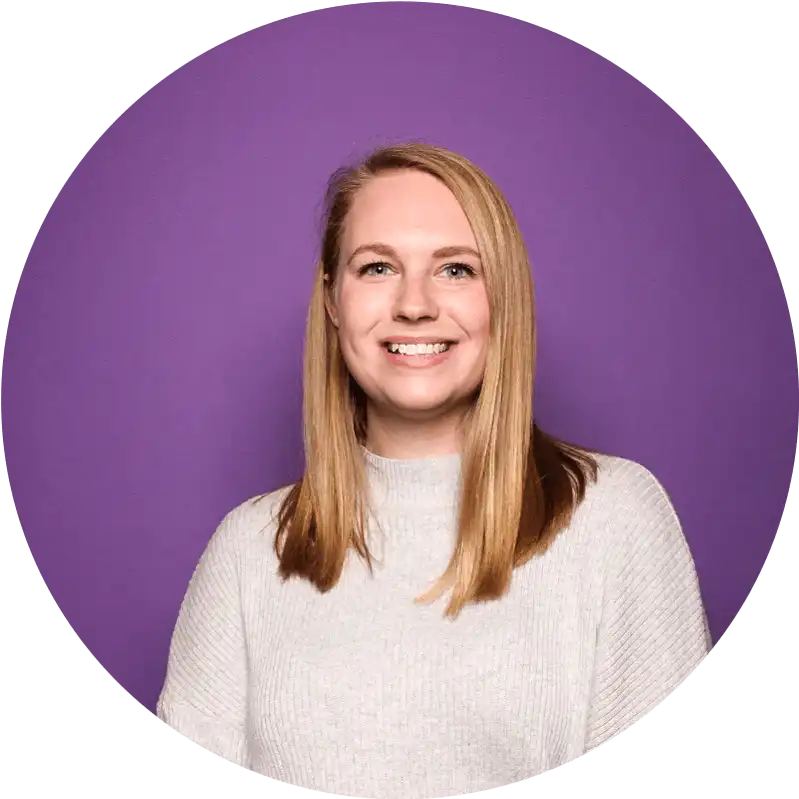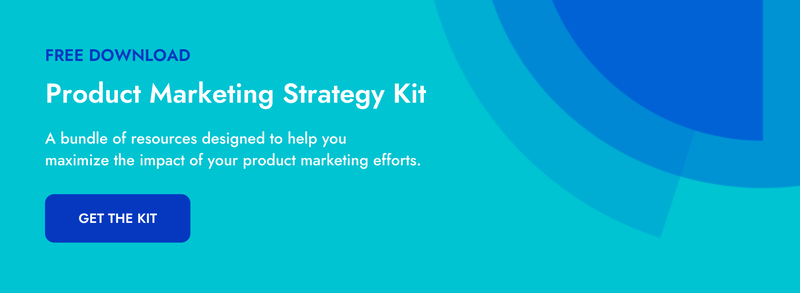 Crayon's Product Marketing Spotlight is an interview series where we chat with product marketers to get a glimpse into their careers and gain unique insight into product marketing strategy. In this edition of Product Marketing Spotlight Series, we shine the light on Cody Bernard, Product Marketing Manager at Drift Conversational Marketing.
Crayon's Product Marketing Spotlight is an interview series where we chat with product marketers to get a glimpse into their careers and gain unique insight into product marketing strategy. In this edition of Product Marketing Spotlight Series, we shine the light on Cody Bernard, Product Marketing Manager at Drift Conversational Marketing.
ED: What is your role?
CB: I’m a Product Marketing Manager at Drift. I help with the go-to-market strategy for all of our products, which includes monthly launches. At Drift, we ship daily but launch something new every month so that we can help our customers get the most out of Drift.
ED: What does the company do?
CB: Drift is a conversational marketing platform that connects sales teams with their future customers, now. Buyer expectations have completely changed. Look at apps like Uber, Amazon, and AirBnB. I can hail a cab, buy all of my groceries, and even book a place to stay - all with the tap of a button. At Drift, we realized that this shift was happening in the B2B space as well. So we focus on connecting buyers with sellers as quickly as possible.
ED: Tell me a little bit about your career path. What was your first job, and what else happened along the way to bring you to where you are now?
CB: While it may not be common, I actually got my start in Product Marketing. So, when I was fresh out of school, I got an internship working in a procurement department for OSRAM Sylvania. I quickly realized that big corporate life was not for me.
I had a Marketing degree from UNH, and I realized I wanted to get into the marketing space. So I was firing off my resume to a lot of different marketing jobs, from Demand Gen, to Product Marketing, to Email Marketing. One of the companies was Bullhorn and luckily enough, they called me back. So that's where I got my product marketing start in December of 2013, and I worked there for almost four years.
At Bullhorn, I started off as a Product Marketing Associate. And over the course of my four years, I worked my way up to a Senior Product Marketing Associate, and then to Product Marketing Manager. As an Associate, I was responsible for competitive intelligence, monthly product updates, communications that we'd send out to our customers, and tactical projects. As I started working my way up, that's when I started taking on more of a strategic role. An example that comes to mind was when we were looking to break into a few new international markets, my job was to create our go-to-market strategy for getting into those markets successfully covering everything from revenue forecasting to integrated marketing campaigns.
ED: You mentioned that when you were an Associate at Bullhorn, you were responsible for competitive intelligence, how much of your day-to-day now involves CI?
CB: CI was crowdsourced when I first started. The main goal for PMM was to put together competitive materials that our sales team could use to win more deals. So we put together battlecards that included everything from feature breakdowns, to positioning against a specific competitor, to a pricing comparison. I’m actually in the process of developing our CI engine to go much deeper including win/loss analysis, ongoing enablement, campaigns, and more.
ED: What other skills have you learned from past roles that have helped you prepare for what you’re doing at Drift right now?
CB: Drift is a very unique place, and Product Marketing is a very unique role within any company. Everyone kind of has an idea of where it should fit in an organization, whether that's under Marketing, Product, or somewhere else. And the things that they should be working on differ, too.
At Bullhorn, PMM was focused on customer acquisition. But when I was working at a previous company, LogMeIn, after I left Bullhorn, I was more focused on customer retention. Both of these strategies, although requiring different types of activity, should work in parallel. At Drift, we have a great balance.
All of my past jobs set me up for where I am today. At the end of the day, it’s all about diving deep into problems, figuring out the root cause, and working together with respective teams or departments to solve those problems and achieve our goals.
ED: Overall, what skills do you think are needed for someone to be a strong Product Marketer?
CB: Number one: copywriting. That's something that I've learned is super important since I've been at Drift. I've had the pleasure of learning from some of the best - Dave Gerhardt, David Cancel, and Dan Murphy - they're all really strong copywriters. It’s incredibly powerful if you can move people with your writing.
Next, collaboration and communication. This incorporates many things such as being able to work with other people in your organization, having an empathetic mindset, having emotional intelligence, openness to learn, willingness to make mistakes, and accepting that it’s okay to be wrong. Always remember that the people around you are working towards the same goals as you. You need to be able to trust the people in the room to be able to make the right decisions, too.
Also, you've got to be comfortable with change. In Product Marketing, things change so much. For example, the product team may say, 'we're launching the product this month,' but if it’s not ready, you have to shift your focus to launching something else. The ability to adapt to those changes is a really key skill.
The last one would just be general organization, because as a Product Marketer, you're involved with so many different projects, and so many different teams. You really do have to understand what you’re doing day by day, and what you should be doing to help achieve the goals that you set out to accomplish.
ED: You mentioned that you made battlecards to support your sales team. What do those look like for your team?
CB: The battlecards that we put together typically live on our Wiki. To communicate them to the team, we use Slack. If somebody says, “Hey, I'm coming up against this competitor, does anybody have a few quick points that I can reference that you've seen work in the past?,” they'll refer back to the battlecard.
ED: What is your advice for someone who is planning a product launch for the first time?
Honestly, my first ever product launch was stressful. I was new, young, and didn’t know much about product marketing at the time. To avoid having a similar situation for your first launch, definitely leverage the resources you have within your company. Definitely take ownership, especially if you’re a one-person product marketing team, but lean on the people around you to guide you through it.
You’re going to make mistakes, but it will only help you get better. Nothing is ever going to be perfect when it comes to a product launch, but it’s something you can continuously learn from.
After the launch, do an after action report - figure out what went right and what went wrong. Double down on what went right, but take ownership of what went wrong. As you do your next launch, make sure that those are the things you’re looking into as you’re building your go-to-market plan.
ED: What sales enablement programs or resources have you found to be most impactful?
CB: Something that we’ve been using for the past few product launches is Gong. We’ll come to market with our new monthly product, and we’ll train the sales team on messaging and positioning. Then we’ll create tags in Gong that highlight the product so every time something is mentioned, I get notified so I can listen to the calls. I can then see which reps did a good job of positioning the product, and that becomes the new gold standard for reps to follow. Alternatively, if I find a rep isn’t as strong on positioning, I can provide them with more training. This helps us get the team delivering one clear message.
Another thing we use a lot is video. Rather than taking our sales team off the floor, we record our sales trainings using video, and track the views. Then, we quiz them to ensure that they’re essentially certified on the product.
ED: What’s the best career advice you’ve ever received?
CB: I learned that the one thing in marketing that hasn’t changed, is people. Sure, new approaches to marketing are created every day, but people have stayed the same. Let me explain. People still have motivation and emotion - that has never changed. The mediums have changed, and the channels have changed, but people are the same.
ED: When you’re not hard at work, what’s your favorite thing to do?
CB: Hanging out with my friends, playing sports, hiking with my dog on the weekends, traveling when I can find the time… just the simple stuff!

Related Blog Posts
Popular Posts
-
 How to Create a Competitive Matrix (Step-by-Step Guide With Examples + Free Templates)
How to Create a Competitive Matrix (Step-by-Step Guide With Examples + Free Templates)
-
 The 8 Free Market Research Tools and Resources You Need to Know
The 8 Free Market Research Tools and Resources You Need to Know
-
 Sales Battlecards 101: How to Help Your Sellers Leave the Competition In the Dust
Sales Battlecards 101: How to Help Your Sellers Leave the Competition In the Dust
-
 6 Competitive Advantage Examples From the Real World
6 Competitive Advantage Examples From the Real World
-
 How to Measure Product Launch Success: 12 KPIs You Should Be Tracking
How to Measure Product Launch Success: 12 KPIs You Should Be Tracking





%20(1).png?width=500&name=CI%20Strategy-CI%20Audit%20(1)%20(1).png)